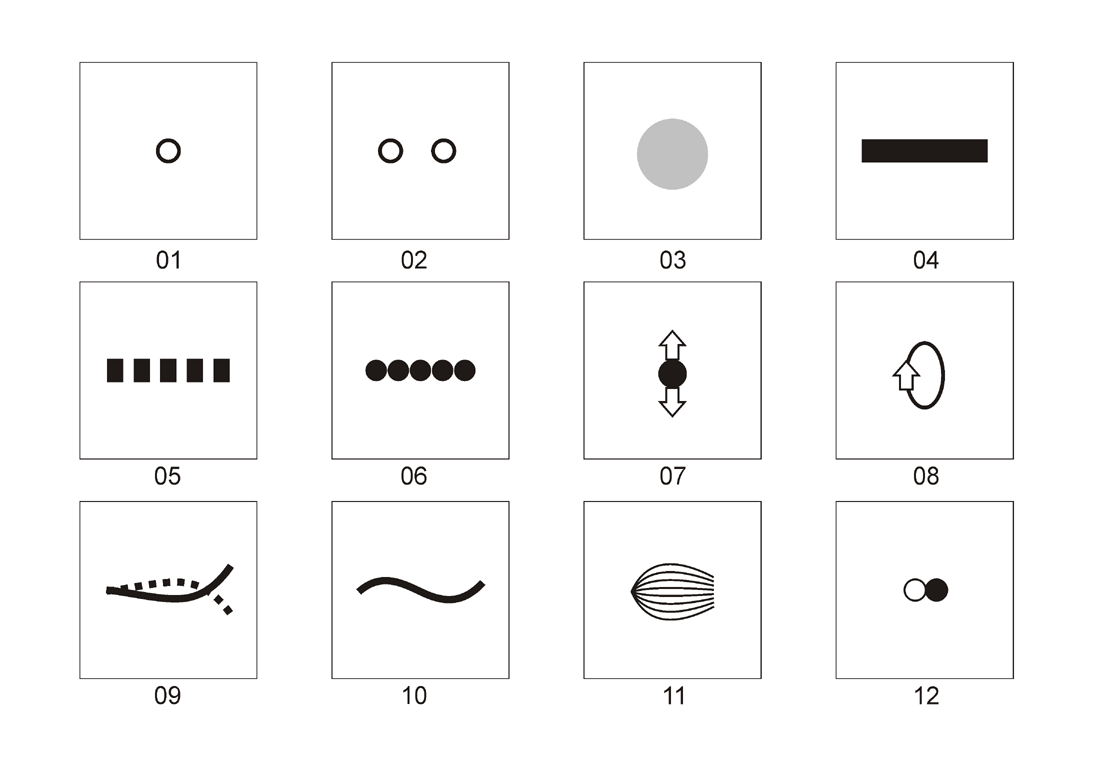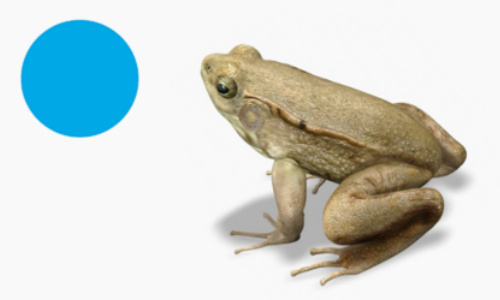General
Studying
behavioural responses of animals in experimental conditions, ethologists have
found relatively simple stimuli that could be more effective than the natural
objects. Single spots (called also eye-spots) and two horizontally arranged
spots, rectangular longitudinal stripes,
periodic gratings and other stimuli (Fig.1) belong to them. Because the foregoing
stimuli are not exact imitations of the natural objects, we will call them amimetic stimuli. In several articles,
we will group the main visual amimetic stimuli and describe how they are used
in the ethological research, whether they occur in the nature as well as their application
in the fishing lure industry.
In
the framework of applied ethology, we will address to the fishing lure
industry. It is that only sphere of the human activites, where artificial
stimuli and models of the various animals are used in the largest scale.

Figure
1. The basic visual amimetic stimuli
Names
of the basic visual amimetic stimuli used in this article:
01.
Concentric spots
02.
Two horizontal spots
03.
2D & 3D roundish stimuli
04.
Rectangular stripes
05.
Periodic gratings
06.
Chains
07.
Vibrators
08.
Spinners (rotating stimuli)
09.
Flutters
10.
Undulators
11.
Pulsators
12.
Mechanical & light flashers
Note,
stimuli 05 and 06 are periodic spatial, whereas stimuli 07, 08, 09, 10, 11, and
12 are periodic spatiotemporal
In
the terminology of early ethologists, some of the amimetic stimuli shown above called
the sign stimuli (e.g., Manning &
Dawkins, 1998). Generally, using simple stimuli and changing parts of complex
stimuli, scientists were able to find the so called supernormal stimuli that induced in animals the more strong
behavioural responses than the modelling natural objects.
For
example, the giant cane toads, Bufo
marinus, respond to the horizontally moving rectangular longitudinal stripes (20
mm long x 2.5 mm high) much more actively (on average of 10 times) than to live
crickets and insect plastic models (Robins & Rogers, 2004). Similarly,
reproductive males of the common toad, Bufo
bufo, prefer (in four cases against one) to form sexual pairs (Fig.2) with the
fixed blue discs (5 cm diameter) than with the live mobile females (Gnyubkin
& Kondrashev, 1978).

Figure 2. Reproductive males of toads prefer to congregate sexual pairs with blue discs than with live females
Manning
and Dawkins (1998) give many other examples of this kind.
Neuroethology
Visual
amimetic stimuli induce numerous behavioural responses in many animals and do
not imitate, as
mentioned above, the
concrete natural objects. The effectiveness of these stimuli is grounded on the common mechanisms of visual
perception, common for all visually guided animals. Among visual amimetic
stimuli, the nature of spots, stripes and gratings, both static and moving, as
well as rotating striped drums is most studied.
For example,
in fish and other
vertebrate animals, spots are detected at the level of ganglion cells of
retina, which have the more or less distinct concentric receptive fields with the
antagonistic center and periphery. According to Horn (1962; see Fig. 6.5 b,c),
...
Read more »





